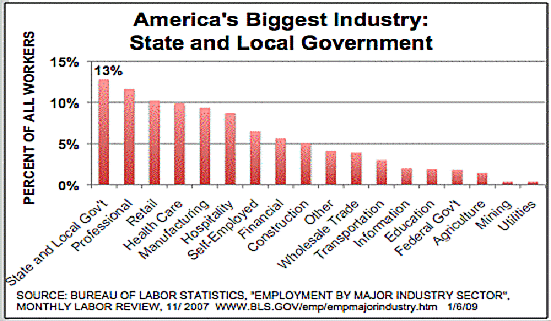September
18,
2009
GUEST
EDITORIAL
The Largest Employer in the US
By
IVAN BELIVEAU
|

State and local governments employ a lot of people. In fact, they are the largest employers in the US.
New Hampshire may be typical of other states in the US. All the facts aren’t readily available by state. A few conclusions can be reached, however.
According to a 2006 survey by the Bureau of Labor Statistics, the largest U.S. industry was state and local government.
Of 150 million U.S. workers, state and local governments employed 12.8 percent or 20 million of the total.

Goffstown has about 400 public employees as a matter of public record and pays no employer taxes (to the town itself).
The only larger employer in Goffstown is St. Anselm’s College; an employer that does at least pay some taxes to Goffstown.
State and local government workers are also better paid than private sector workers.
A front-page USA Today article, ("State, local government workers see pay gains",
Feb. 1-3, 2008 Page A1) stated:
"State and local government workers now earn an average of $39.50 per hour in total compensation... Private workers earn an average of $26.09 an hour in total compensation. Benefits are a big reason for the gap."
Companies have trimmed pension benefits and asked employees to pay a greater share of medical costs.
Few governments have imposed similar cuts on teachers, police, firefighters, DPW workers, snowplow drivers, lawyers and other civil servants.
From 2000 to 2007, public employees enjoyed a 16% increase in compensation after adjusting for inflation compared with 11% for private workers.
According to the Bureau of Labor Statistics (BLS), 79 percent of state and county workers but only 20 percent of private workers participate in "defined-benefit" retirement plans (pensions).
Similarly, the BLS reports that 72 percent of state and county workers but only 52 percent of private workers have employer-provided medical insurance.
The Goffstown public employees may be entirely justified (like the private sector employees) in seeking higher compensation because of a high cost of living in the US.
A reasonable question or two might be: 1) Can Goffstown taxpayers now afford these public sector total compensation levels, and 2)
Where do residents sign-up for a public sector job?

|





